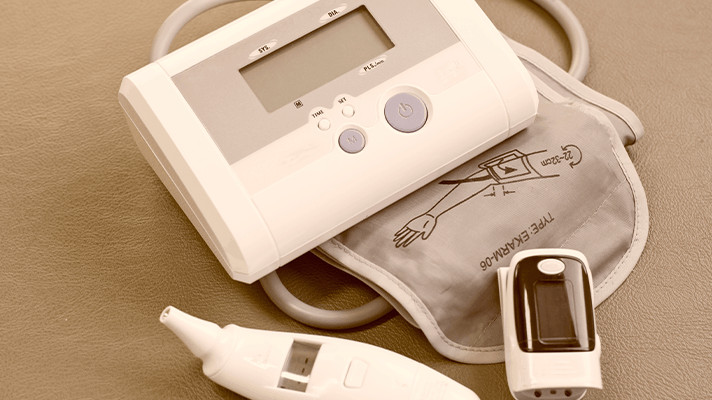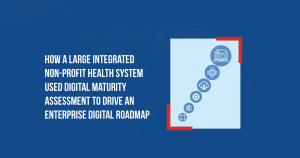Technology brings care to home for chronically ill patients
Video visits, temperature sensors and wearables can replace the need for clinic visits. The pandemic has only accelerated this process – and shown the need to innovate infrastructure and make investments.

At Geisinger in Pennsylvania, a pilot program to bring care to the homes of older patients with complex healthcare needs has shown a 35% reduction in visits to the emergency department visits, a 40% drop in hospital admissions and an average annual savings of nearly $8,000 per patient. The future will see chronic disease being managed more from homes and physicians’ offices than in a hospital setting.
Chronically ill patients may not always require visiting the hospital frequently if their follow-ups and routine checkups can be managed remotely. Especially in times of a pandemic, they are better off staying at home.
However, that should not affect their care. Given today’s technological advancement in healthcare, most follow-ups can be well managed remotely. While nothing can beat an in-person experience, physicians can check in on them digitally, through remote patient monitoring tools or video consults.
Technology is rapidly changing the bedside examination. Video visits, infrared temperature sensors, mobile health, and wearables replace the need for clinic visits. While remote patient monitoring and telehealth have been on the radar for a few years now, defined workflows and processes around it are continually evolving to improve the care delivery experience. The pandemic has only accelerated this process and the need to innovate better infrastructure and device investments.
Infrastructure to manage chronic diseases remotely
Technology components that can help better organize chronic care management remotely include:
- Devices and Sensors: Medical devices and sensors help a physician measure the vitals and other patient parameters. For example, as a patient walks into the clinic, a physician notices his gait. The technology equivalent of this can be gait recognition sensors using mobile accelerometers. Similarly, sensors for measuring blood pressure, temperature, glucometers, pulse oximeters, and respiratory rate sensors, all integrated with mobile applications, can be used to monitor patients remotely. Many healthcare facilities and smaller clinics offer remote monitoring devices or kits, as per a patient’s need.
- Platforms: Platforms are required to aggregate data and facilitate communication between patients, physicians, and caregivers. These platforms are HIPAA compliant and offer integration with devices and EMRs.
- Integration with EMR: While EMRs are part of the technology infrastructure in any health system, integrating wearable data from devices into the EMR can help physicians maintain data continuity with the initial in-person visit recorded in the EMR. Facilities and providers can choose to reduce the noise created by large volumes of data from personal devices by requesting data at specified intervals only. With EMRs offering healthcare-standard APIs (such as FHIR) for integration, patients need to select devices with integration capabilities using healthcare standards.
- Data analytics for risk stratification and decision support: Devices and sensors can generate vast amounts of data stored in big data repositories. Algorithms on top of this data can help in risk stratification, prediction, and improving outreach. AI techniques like machine learning, cognitive computing, and deep learning can play a critical role in identifying chronic diseases using predictive modeling techniques.
Preferred functionalities to manage remote care
Type 2 diabetes, coronary artery disease, atrial fibrillation, chronic obstructive pulmonary disease, congestive heart failure, stroke, and chronic wounds are seven diseases where technology has been used to manage care for patients with promising results.
These diseases impact at least half of the adult population globally and account for over 80% healthcare costs. Current care delivery for these chronic diseases is reactive. For proactive management of care, patient data at regular intervals is needed to provide real-time feedback and motivate patients to adapt to healthy behavioral changes.
Chronic disease management needs a holistic approach focused on lifestyle changes and behavior modifications. It uses technology to gather data from wearables and adds AI and analytics to drive outcomes. While there are not many stand-alone solutions specifically for managing chronic diseases, it is important to make sure that these technology solutions or applications have the following functionalities:
- The ability to group patients: Data from an EMR can help group patients by disease conditions, risk factors, comorbidities, age, and active medications. Such groupings help provide valuable information for sending alerts, reminders, and prescription refills to patients suffering from chronic diseases.
- The ability to engage patients: Often, chronic diseases are due to health risk behaviors such as physical inactivity, incorrect nutrition, tobacco use, and excess alcohol consumption. Engaging patients throughout their healthcare journey can help achieve desired outcomes in chronic disease management. “Tell me and I forget, teach me and I may remember, involve me and I learn” (Benjamin Franklin). Improvement in behavior patterns can ensure continuous reminders, alerts, and engaging patients to track behavior patterns, diet, and lifestyle goals to improve health. A two-way communication flow from the patient to the care provider team and vice versa should be a necessary feature.
- The ability to integrate remote patient monitoring devices: IoT devices and wearables integrated with the EMR workflows can allow caregivers to provide advice at the point of care. Vital data points captured with wearables, smartphone apps, and home monitoring devices are used in between follow up visits to provide interim care and advice in chronic disease management.
- The ability to aggregate data from other hospital information systems: These could be data aggregated from multiple sources, including labs, pharmacy, sensors, and valuable clinical-decision support (CDS) to track patient information to manage chronic diseases proactively.
Population health management experts recommend closing gaps in care in high-risk populations for better health outcomes. Mobile applications, customer relationship management applications, patient portals, and patient education platforms are part of the technology infrastructure to engage patients.
Integrating technology to improve access, affordability
The CDC runs several structured intervention programs to manage chronic diseases. The National Diabetes Prevention Program and Chronic Disease Self-Management Program is one such program with the CDC’s necessary resources. Many health systems are using, both in-person and online. The National Diabetes Prevention Program, for example, provides good economic value and could save an estimated $1,146 per participant for in-person classes and $618 for online classes over five years.
Many of these programs are now being run online using video visits for interaction and wearable devices to capture vital data.
Successful programs like Livongo offer connected glucometers, support from health coaches, and unlimited strips for diabetes management. Livongo’s success in the chronic disease management space can be attributed to its B2B partners, including employers, insurances, associations, and other providers.
Integrating technology for chronic disease management needs planning for functionality, processes, and leadership policies in place for it to be successful and improve overall health outcomes. As more and more wearable devices are coming into the market, planning chronic devices’ management is getting more affordable and convenient.
To summarize, a technology solution for chronic disease management should include these capabilities:
- The ability to ientify the population eligible for intervention
- Communication with multidisciplinary teams that may include physicians, pharmacists, nurses, dieticians, and psychologists
- Algorithms for risk identification and stratification
- Patient education platforms
- Video visits
- Outcomes evaluation
- Tracking and monitoring the program
- Security and Compliance
As healthcare systems move towards value-based care, creating the shift towards remote monitoring of chronically ill needs to happen.















